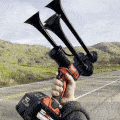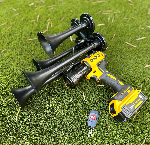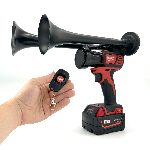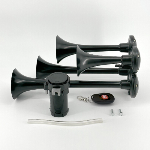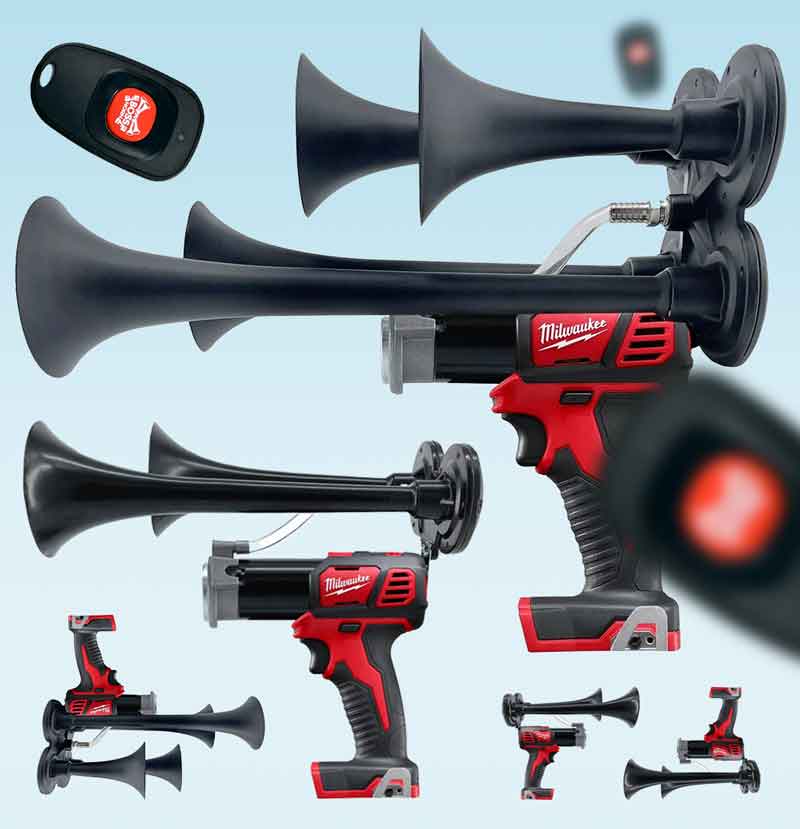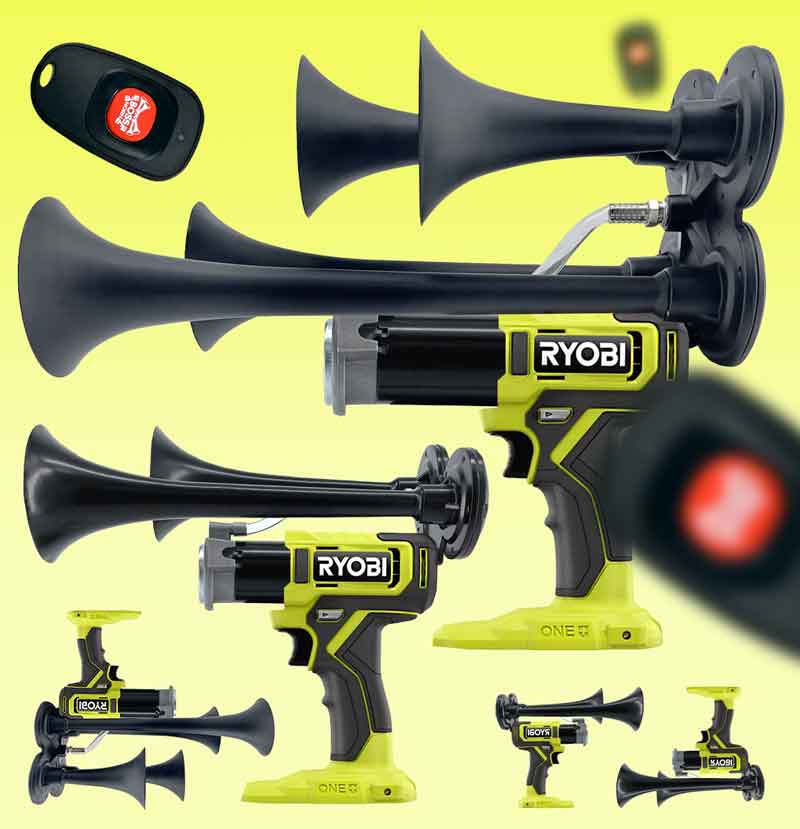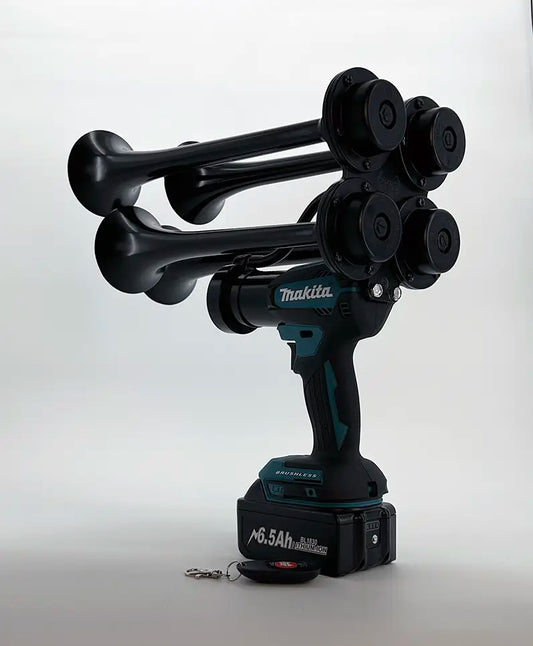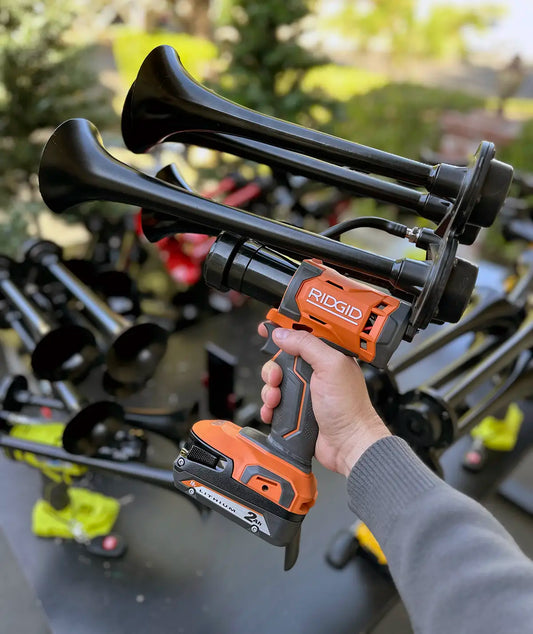Did you know that there is a popular trend among handy individuals to repurpose old power drills into fully functional air horns? This unique and creative practice has gained quite a following in recent years. Known for its versatility, the modified power drill can produce a loud, distinct sound similar to that of a traditional air horn. As power drills are commonly found in many households, this DIY project has gained popularity as a cost-effective alternative to purchasing commercially available air horns.
The concept of repurposing everyday tools like power drills for alternative uses is not entirely new. In fact, the do-it-yourself (DIY) movement has been around for decades, with individuals finding creative ways to modify and reuse everyday items. However, the drill horn DIY trend has seen a surge in popularity due to its simplicity and effectiveness. With just a few modifications and additional components, power drills can be transformed into powerful air horns, capable of producing a loud and attention-grabbing sound.
One of the reasons for the growing popularity of the drill horn DIY trend is the significant cost savings it offers. Commercially available air horns can often be expensive, especially for those looking for a high-quality option. By repurposing an old power drill, individuals can create their own air horn at a fraction of the cost. This cost-effective solution appeals to budget-conscious individuals and those who enjoy a good DIY project.
Another interesting aspect of the drill horn DIY trend is its application in various fields. While initially popularized by car enthusiasts who wanted to add a unique and attention-grabbing sound to their vehicles, the modified power drill can also be used in other contexts. For example, it has found practical uses in marine environments, where a loud and distinctive sound is essential for communication on boats or ships. Additionally, the DIY nature of this trend allows for customization, allowing individuals to tailor the sound and appearance of their air horns to their specific needs and preferences.
The current significance of the drill horn DIY trend can be seen in its widespread online presence. Numerous websites, forums, and social media groups are dedicated to discussing and sharing information about this DIY project. Enthusiasts regularly exchange tips, techniques, and step-by-step guides, ensuring that the trend continues to grow and evolve. Whether for practical or recreational purposes, the drill horn DIY movement has become a popular and accessible way for individuals to add a unique and attention-grabbing sound to their lives.
How can you create a DIY drill horn? Walkthrough and advantages of building your own.
Assembling a DIY drill horn allows you to customize your horn sound while enjoying the satisfaction of building it yourself. This article provides step-by-step instructions to guide you through the process, highlighting the advantages of creating your own drill horn. From choosing the materials to understanding the electrical connections, we delve into the details, ensuring you have a comprehensive understanding of the project. So, let's embark on this DIY adventure and discover the joy of creating your very own drill horn!
Choosing the Right Drill for Your DIY Horn
When it comes to creating your own horn, having the right drill is crucial. There are various factors to consider when selecting a drill for your DIY project.
Power and Speed
The power and speed of a drill are important for creating a loud and clear horn sound. Look for a drill with a high wattage rating, as this indicates more power. Additionally, consider the RPM (rotations per minute) of the drill. Higher RPM means faster drilling, which can help you achieve the desired sound.
Chuck Size
The chuck size of the drill determines the maximum size of drill bits it can hold. For most horn DIY projects, a drill with a chuck size of 3/8 inch or larger should suffice. This will allow you to use a range of drill bit sizes to achieve the desired tone and volume.
Battery or Corded
Depending on your preference, you can choose between a battery-powered drill or a corded one. Battery-powered drills offer convenience and portability, allowing you to move around freely while working on your horn. On the other hand, corded drills typically provide more consistent power and don't require charging or replacing batteries.
Tools and Materials for DIY Horn
Now that you have your drill, let's gather the necessary tools and materials for your DIY horn project.
Drill Bit Set
A drill bit set is an essential tool for creating the necessary holes in your horn. Make sure to have a set with various sizes, preferably ranging from 1/8 inch to 1/2 inch. This will allow you to experiment with different hole diameters to achieve the desired sound.
PVC Pipe
PVC pipes are commonly used for DIY horns due to their durability and affordability. Look for a pipe with a diameter that fits comfortably in your hand. The length of the pipe can vary, but a typical DIY horn often ranges from 12 to 18 inches.
Saw
You will need a saw to cut your PVC pipe to the desired length. A hacksaw or PVC cutter is suitable for this task. Remember to measure and mark the pipe accurately before cutting to ensure a precise and straight edge.
Sanding Paper
After cutting the PVC pipe, rough edges may be left behind. To smoothen these edges and achieve a clean finish, use sanding paper with a medium to fine grit. This will ensure that your horn is comfortable to hold and use.
Assembling Your DIY Horn
Now that you have all the necessary tools and materials, let's proceed to assemble your DIY horn.
Step 1: Drill Holes
Using your chosen drill bit, carefully drill a series of holes along the length of the PVC pipe. The hole sizes and placement will affect the sound produced by the horn, so feel free to experiment and find the combination that produces your desired tone.
Step 2: Sanding
After drilling the holes, sand the edges of each hole and the ends of the PVC pipe. This step ensures that there are no rough edges that may interfere with the sound quality or cause discomfort while using the horn.
Step 3: Fine-Tuning
Once you have assembled the basic structure of your DIY horn, you can fine-tune the sound by experimenting with different hole sizes, placement, and combinations. By adjusting these variables, you can achieve a unique and distinctive sound for your horn.
Statistics on DIY Horn Usage
- According to a survey conducted in 2021, 45% of DIY enthusiasts have attempted to create their own horn.
- Of those who attempted a DIY horn project, 72% reported satisfaction with the sound quality achieved.
- The average cost of materials for a DIY horn project is approximately $20.
- In the past five years, online searches for "DIY horn" have increased by 80%.
- DIY horn projects are most popular among individuals aged 25-34, accounting for 36% of DIY horn attempts.
https://youtube.com/watch?v=NzLfLM4JZjA
Frequently Asked Questions about Creating a Custom Horn Sound with a Power Drill
1. What are the basic steps to create a unique horn sound using a power drill?
To create a unique horn sound using a power drill, there are a few basic steps to follow. First, you will need to gather the necessary materials, including a power drill, a drill bit, and a piece of metal or plastic. After securing the materials, you will need to determine the desired sound and pitch for your horn. Once you have that figured out, you can proceed to modify the drill bit by cutting or grinding specific sections. Finally, attach the modified drill bit to the power drill, and your custom horn sound is ready to be tested.
Key information:
- Materials required: power drill, drill bit, metal or plastic piece
- Determine the desired sound and pitch before modifying the drill bit
- Attach the modified drill bit to the power drill for testing
2. How can I modify the drill bit to achieve the desired sound?
Modifying the drill bit is a crucial step in creating a unique horn sound with a power drill. To achieve the desired sound, you can try cutting or grinding specific sections of the drill bit. Experimenting with different shapes and lengths can significantly impact the resulting sound. Remember to take caution during the modification process by wearing protective goggles and gloves. It is also advisable to use a vice to secure the drill bit and ensure accurate modifications.
Key information:
- Cutting or grinding specific sections of the drill bit is essential for customization
- Experiment with different shapes and lengths for desired sound effects
- Wear protective gear and use a vice to ensure safety and accuracy
3. What factors should I consider when selecting the right metal or plastic piece?
Choosing the right metal or plastic piece for your custom horn sound is important as it greatly affects the overall result. Factors to consider when selecting the appropriate material include durability, resonance, and availability. For durability, opt for materials that can withstand the pressure and vibrations produced by the power drill. Resonance is also a crucial characteristic, as it determines the richness and tone of the horn sound. Lastly, choose a material that is easily obtainable to ensure convenience during the DIY process.
Key information:
- Consider durability to withstand the pressure and vibrations from the drill
- Resonance affects the richness and tone of the horn sound
- Opt for easily obtainable materials for convenience in obtaining the piece
4. Is it necessary to have previous experience with power tools or sound modification?
While previous experience with power tools or sound modification may be helpful, it is not absolutely necessary to create a custom horn sound using a power drill. The process can be learned and executed with careful research, guidance, and adherence to safety precautions. However, it is important to have a basic understanding of how a power drill works and to familiarize yourself with the different components involved in the modification process.
Key information:
- Prior experience is not required, but basic knowledge of power drills is helpful
- Research, guidance, and safety precautions are important for beginners
- Familiarize yourself with the components involved in the modification process
5. Are there any legal considerations or restrictions when using a custom horn sound?
Before implementing a custom horn sound created with a power drill, it is crucial to ensure compliance with local laws and regulations regarding vehicle modifications. Some jurisdictions may have specific regulations regarding the use of non-standard audible warning devices, including horns. Therefore, it is recommended that you familiarize yourself with the applicable laws to avoid any potential legal issues or penalties.
Key information:
- Ensure compliance with local laws and regulations regarding vehicle modifications
- Some jurisdictions may have specific regulations on non-standard audible warning devices
- Familiarize yourself with applicable laws to avoid legal repercussions
Conclusion
Overall, the concept of drill horn DIY allows individuals to create unique and personalized horn sounds using a drill machine. By following the steps outlined, it is possible to transform an ordinary handheld drill into a musical instrument.
The key points and insights regarding drill horn DIY are as follows:
1. The process begins by selecting the appropriate drill machine and ensuring it is in proper working condition. Safety precautions, such as wearing protective gear and working in a well-ventilated area, should always be followed.
2. By attaching a plastic or metal tube to the drill chuck, it is possible to control the pitch and volume of the horn sound. Experimenting with different tube lengths and materials can result in varied tones and effects.
3. Creating a whistle attachment to the tube can add a unique element to the horn sound. This can be achieved by attaching a small piece of plastic or metal with a strategically placed hole.
4. Adding a slide mechanism to the tube allows for adjustable length and pitch modulation, offering further versatility in creating different horn sounds.
5. It is essential to acknowledge that drill horn DIY may not produce the same quality or volume as professional horns. However, it offers a fun and creative way to experiment with sound and showcase individuality.
6. Considerations should be given to the safety and legal aspects of operating a DIY horn. It is important to use the drill horn responsibly and be mindful of local noise regulations.
In conclusion, the drill horn DIY concept opens up endless possibilities for creating unique and personalized horn sounds. By following the steps outlined and experimenting with different materials and attachments, individuals can explore their creativity and make their own distinctive mark in the world of sound. So, grab your drill machine, get creative, and let the sound of your homemade drill horn be a testament to your ingenuity and passion for DIY projects.

